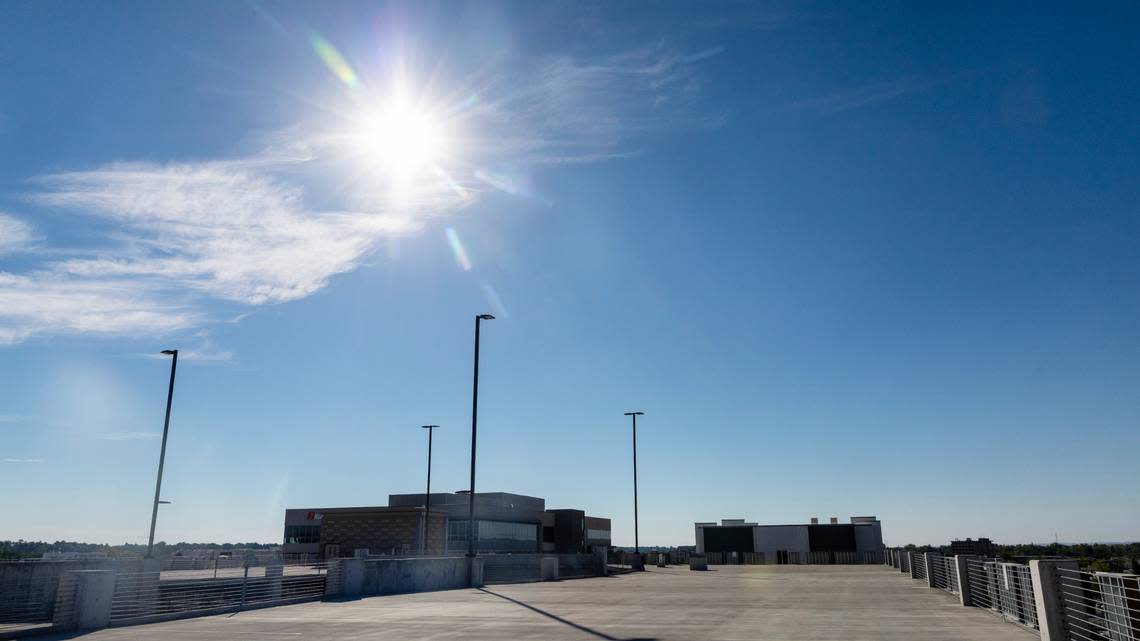Tuesday is the spring equinox. What does that mean? And is Boise enjoying more daylight?

Just when it started to feel like it was getting lighter every morning in Boise, Daylight Saving Time pushed the clocks forward an hour, bringing darkness back to our daybreak routines.
On the flip side, it now means sunlight is sticking around an hour later in the day, giving us all more time to enjoy the outdoors after a long day of work.
On an even better note, we’re gaining more minutes of sunlight every day. The spring equinox arrived on March 19, signaling the start of astronomical spring and the day when the sun rises and sets directly along the equator.
As the sun appears to rise from south of the equator to north of it in the Northern Hemisphere throughout March, we begin to see more daylight while we inch closer to summer.
March is the month with the most drastic daily increase in daylight, according to Kory Anderson of the National Weather Service in Boise.
But just how fast are we gaining sunlight?
March: The most dramatic month of spring
As the sun appears to cross the equator northward, it rises slightly more quickly in the morning and takes slightly longer to set each day as the axial tilt points the Northern Hemisphere toward the sun’s rays.
“When you get to a solstice, the change in daylight is zero,” Anderson said. “And the equinoxes are the farthest away from either the winter solstice or the summer solstice. And so (sunlight) transitions the most between those solstices.”
The summer solstice, the day with the most sunlight, is June 20, while the winter solstice, the day with the least sunlight, is Dec. 21. Meanwhile, the autumnal equinox, the day in which we lose sunlight the fastest, is Sept. 22.
The transition is fastest during March because about 10 days before and after the equinox, the tilt causes the sunlight that hits a region to increase more rapidly than in the middle of summer or dead of winter. The sun is positioned at either extreme of the spectrum during the summer and winter solstices, when the days are either longest or shortest, respectively. Therefore, the change in daylight isn’t as drastic.
Days are rapidly getting longer as we approach the Spring Equinox (Tue, Mar 19, 2024, 9:06 PM MDT). #orwx #idwx pic.twitter.com/SXOO8uoxVr
— NWS Boise (@NWSBoise) March 17, 2024
How much daylight do we gain per day?
On March 1 in Boise, the sun rose at 7:20 a.m. and set at 6:34 p.m. for 11 hours and 14 minutes of daylight.
On March 31, the sun will rise at 7:27 a.m. and set at 8:11 p.m., totaling 12 hours and 44 minutes of daylight — a 90-minute difference in just one month. The sun rises later in the day despite it being later in the month because Daylight Saving Time brings the clocks forward an hour.
On average, Boise gains about three minutes of daylight daily in March. In June, when the summer solstice occurs, the difference in daylight from the start of the month to the end is approximately 11 minutes.
The dramatic increase in daylight helps boost temperatures as we head into spring, but there is a lag.
“Usually, the temperatures are kind of delayed on a seasonal basis because it takes a while for the oceans to warm up in the northern hemisphere, and then it’s kind of a lag by a month or two,” Anderson said.
Highlighting Anderson’s point, the average high temperature in Boise at the start of April is 59 degrees, shooting up to 67 by the end of the month.
The same phenomenon regarding daylight and temperature can be flipped for October each year, shortly after the autumnal equinox: The days get shorter more quickly, and the temperature decreases most dramatically during October.

